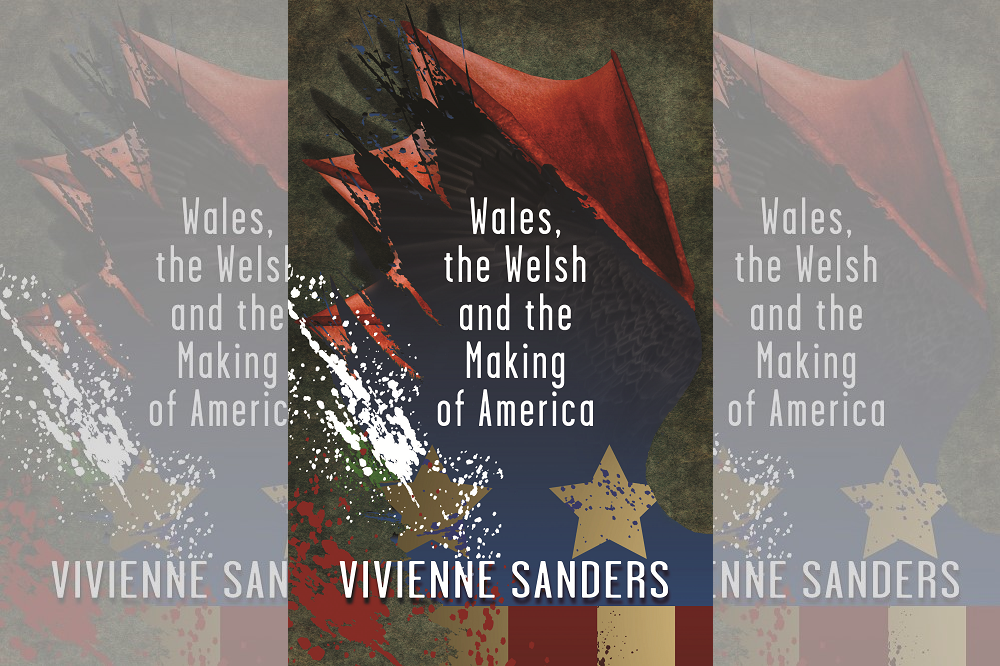Review: Wales, the Welsh and the Making of America by Vivienne Sanders

Adam Somerset
Over three centuries the numbers of westward and southward European migrants ran to the tens of millions. In Perth and Melbourne the Welsh presence is at once evident in the names of the down-town stores of David Jones. The presence of the Welsh of America, a large proportion via the port of Cardigan before the river’s silting, is less to the fore.
It is in part the locations. As with the destinations for Scandinavians the chosen locations for settlement were inland. Swedes and Norwegians entered late into popular culture, there in Jonathan Raban’s “Old Glory” (1992), Philip Roth’s “American Pastoral” (1997) and the Coen Brothers’ “Fargo” (2000). American Welshness is culturally more elusive.
The numbers of Welsh were substantially lower than the Irish and lent themselves less to dramatic treatment. The subject of “Boardwalk Empire”- Irish corruption and criminality in New Jersey- is an apparent world away from Portage County, Ohio. The Welsh of America did not just disperse but they prospered.
A destiny of quiet, successive prosperity in the mid-West does not lend itself easily as material for novel or film script.
A small memorial in Ceredigion speaks of the temper of the migrants. “This oak tree”, reads the plaque, “is a solemn tribute to the hundreds who migrated (1818-1848) from this vicinity to Oak Hill, Ohio and the contribution to the promotion of God, music, education and industry in their chosen homeland.”
The first illustration in Vivienne Sanders’ elegant and encompassing survey is an engraving of a Welsh Quaker Meeting House in Merion Pennsylvania, dating from 1695.
Welsh tract
The first arrivals from Wales were Baptists in 1662, their leader John Myles from Swansea. From 1682-1700 Welsh were the largest grouping in Pennsylvania, leaving their mark in the naming of Merion, Gwynedd, Radnor.
Thomas Lloyd, from a Montgomeryshire family, became a political leader. His family member David Lloyd was, writes Sanders, “a rabble-rouser, a superb writer and an intelligent and devious politician.”
Welsh Baptists bought a “Welsh tract” in 1701 in what is now Delaware. By the time of independence, the originally large proportion of Welsh had shrunk greatly to around 8000 out of the new country’s 2.5 million.
Richard Price and Lewis Evans were close friends of Benjamin Franklin. Price’s writing is similar in tone and vocabulary to that of Jefferson in the Declaration of Independence.
Chapter 7 is titled “the Welsh Go West.” Ezekiel Hughes and Edward Bebb bought land in Butler County, Ohio in 1801. By 1850 there were 5000 Welsh in the Welsh Hills, Radnor, Gallia County and Gomer. Jane R Jones opened a cheese factory in Iowa County, Wisconsin.
Rachel Davies from Anglesey became Wisconsin’s first ordained woman minister. In the 1860s eight thousand first- and second-generation Welsh moved to farm in Bala and Arvonia in Kansas.
Industrial America had its crop of Welsh innovators. Oliver Evans, born in Newport Delaware, pioneered the continuous flow production line.
Rhys Davies, born in Langynidr in the late 1790s, was asked to bring Welsh expertise to a foundry and ironworks in Richmond, Virginia. The Tredegar complex became America’s largest, producing rails, spikes, engines, carriages and guns, ammunition and iron cladding for the Confederacy.
David Thomas from the Neath Valley established the Thomas Iron Company in Hokendauqua, Pennsylvania. He was known as “the father of the anthracite industry”. At Catasauqua Thomas quickly established a Welsh chapel and Sunday school. William R Jones moved from the Cambria Iron works to become General Superintendent of the Carnegie steelworks. He patented the Jones Hot Metal Mixer.
Pioneer
History is made by individuals and Vivienne Sanders interleaves her broad narrative with many others: Charles Lee- “a strange animal but very clever”, “Mad” Anthony Wayne, General Daniel Morgan, Robert Morris- visited by Washington in prison, Button Gwinnett, Meriwether Lewis, James Monroe, John Rees- a reported veteran at both the Alamo and the Newport Rising.
Dan Jones, born in Flintshire, became master of a ship on the Ohio and Mississippi rivers. Among the Mormons whom he transported was Joseph Smith. He visited Smith in prison, narrowly escaping death himself, and returned to Merthyr on a mission to convert to Mormonism.
The book tells of the Welsh who fought in both Union and Confederacy armies. The legacy of names of Wales persisted. Pierpoint Morgan was among the most powerful
figures in the great age of capital; John L Lewis was the most prominent trade unionist. Charles Evans Hughes was Governor of New York and in 1930 became Chief Justice of the Supreme Court.
Frank Lloyd Wright is the last great name in this deeply researched narrative. There is a coda for our times that is not covered by the book. A part of the fortunes made in Ontario at Mitel and Newbridge Networks came back to make the Celtic Manor Hotel. A 1970’s pupil at Cardiff’s Howardian School followed the route west. In the wake of his iron-master predecessors he entered the boom industry of our era. He gained a six-billion-dollar fortune as a pioneer member of California’s technology elite.
Wales, the Welsh and the Making of America is published by University of Wales Press and can be purchased here or from all good bookshops
Support our Nation today
For the price of a cup of coffee a month you can help us create an independent, not-for-profit, national news service for the people of Wales, by the people of Wales.





We Welsh have never been afforded any credit for our part we played in the creation development and prosperity of America.
No official acknowledgment, perhaps, but it’s fairly well known. I was taught about the Welsh contribution to Pennsylvania in school, and there’s a fair bit of stuff on Welsh America scattered around on the Internet.